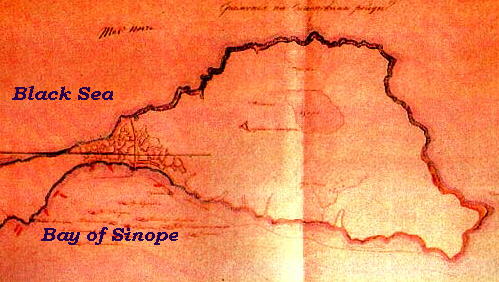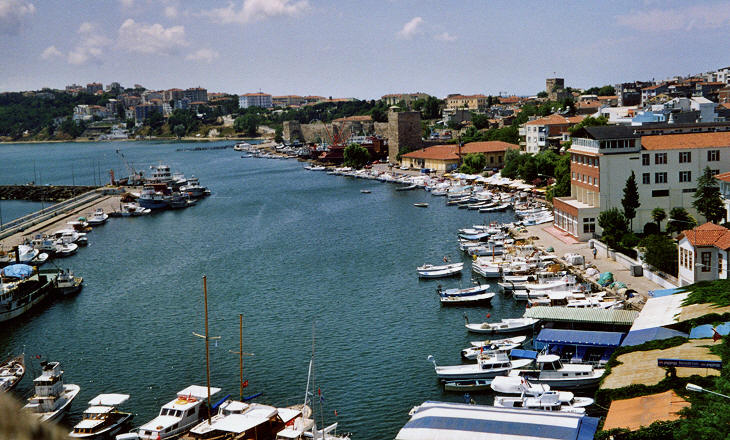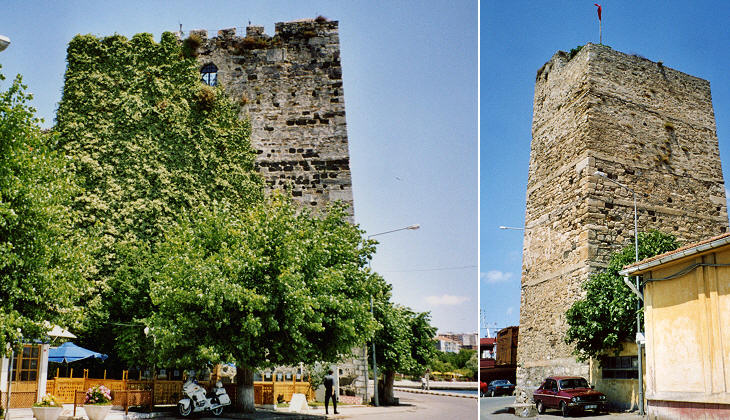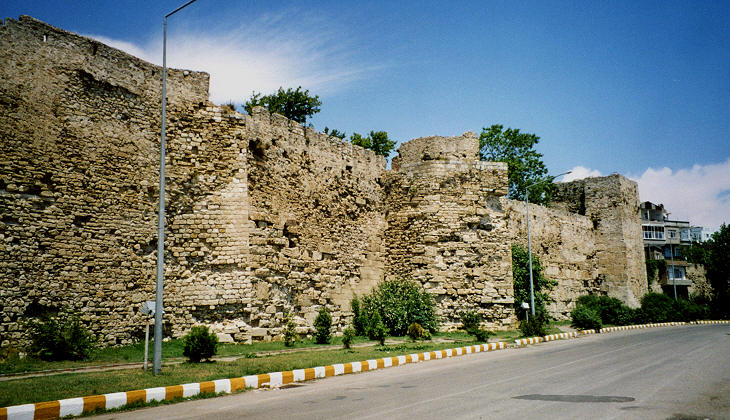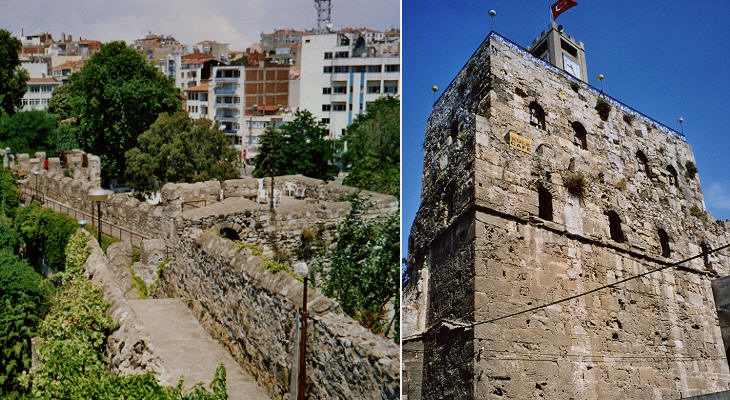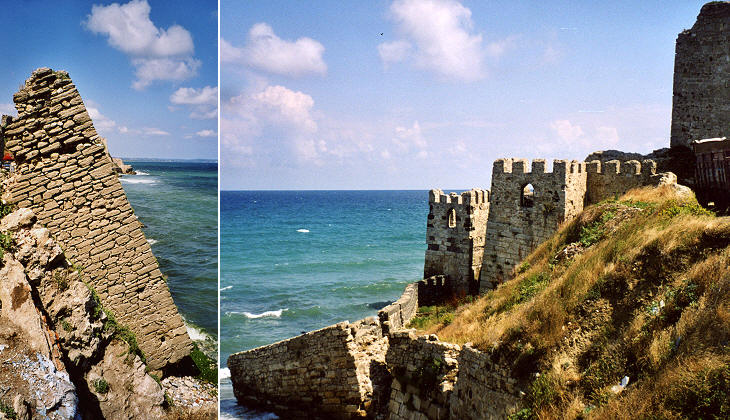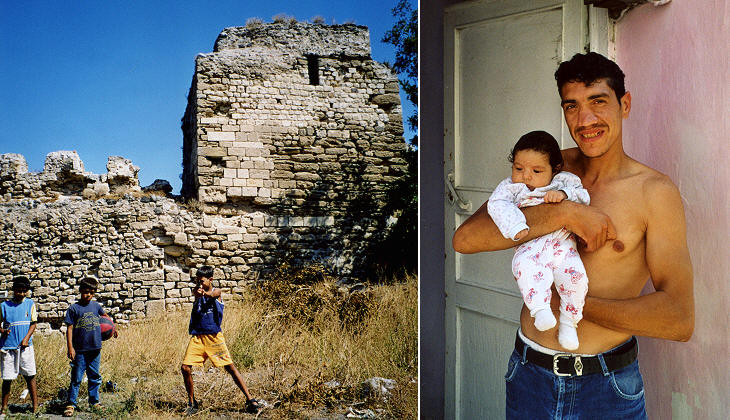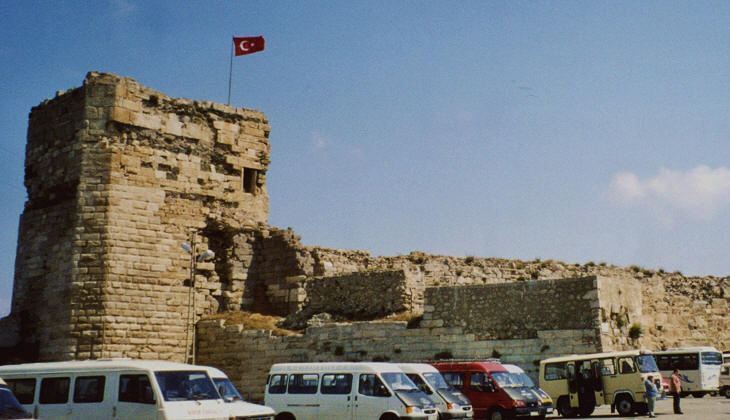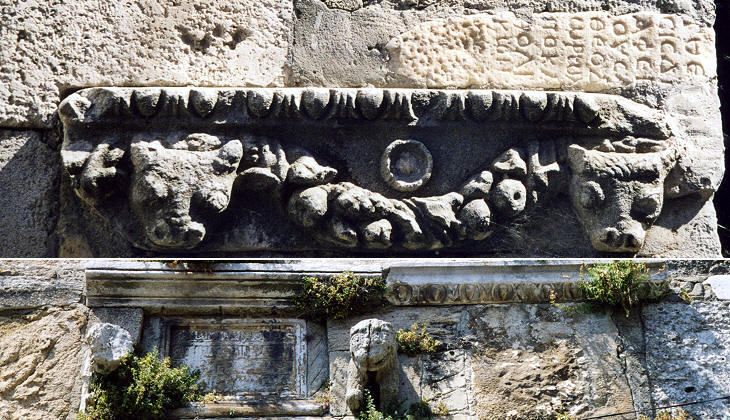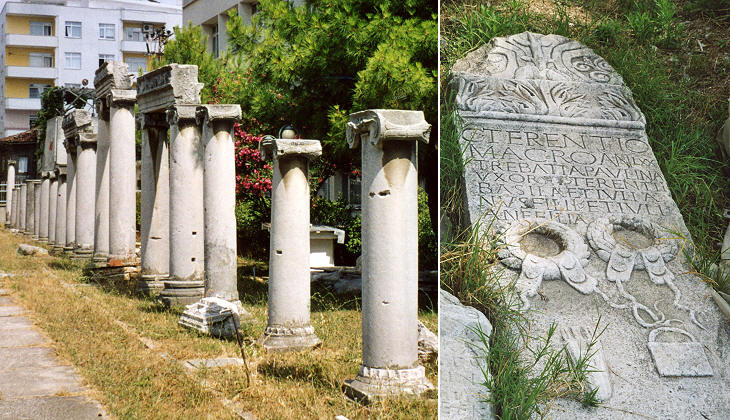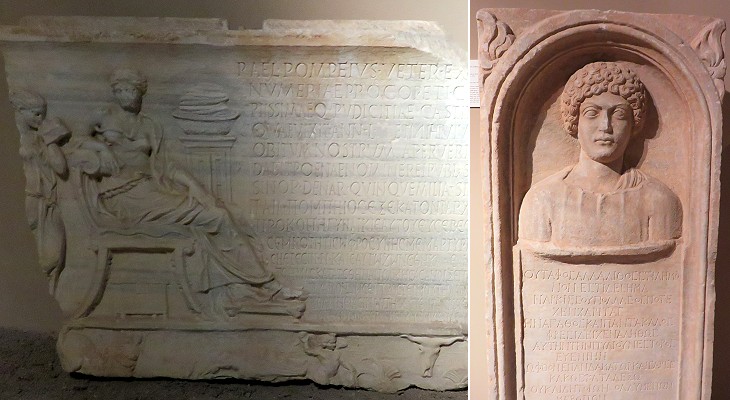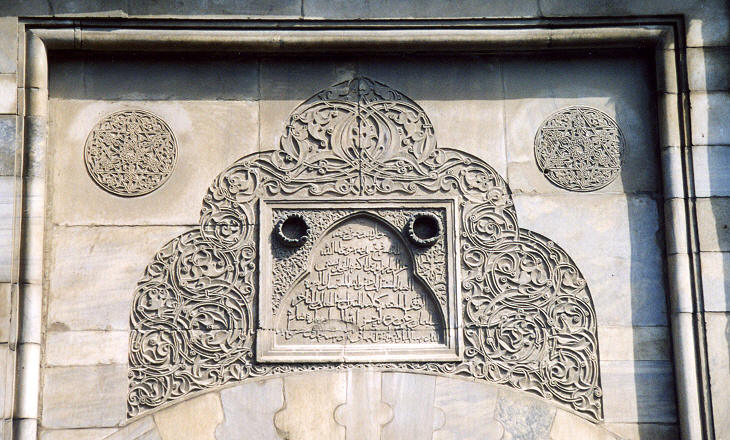  What's New! Detailed Sitemap All images © by Roberto Piperno, owner of the domain. Write to romapip@quipo.it. Text edited by Rosamie Moore. Page revised in April 2015. |
 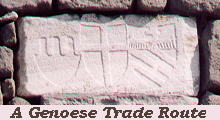 Sinope Sinope(relief showing the coat of arms of Genoa at Amastri) Sinope (today Sinop) owed its development since the most ancient times to its position at the most northern point of the Anatolian coast which facilitated the crossing of the Black Sea to reach the Crimean peninsula. The town lies on a narrow isthmus linking the mainland to a peninsula, which protects the resulting bay from the Black Sea's strong northern winds. A high range of coastal mountains made it rather difficult to reach Sinope from the Anatolian plateau and these same mountains aided in protecting the town from attacks.
Sinope was in turn a prosperous Greek colony, one of the main centres of the Kingdom of Pontus and a rich Roman town (Iulia Felix). During this period it was fortified by walls having the shape of an almost regular rectangle.
With the fall of the Byzantine Empire in Constantinople in 1204 the possession of Sinope was contended between the Byzantine Empire of Trebizond and the Seljuks who ruled most of central Anatolia. The Genoese merchants who had settled in Sinope opposed the Byzantines, as they were in competition with them for control of the Black Sea trade. Eventually, the Seljuk Emirs of Kastamonu, prevailed and the Genoese merchants in Sinope were granted facilities and tax exemptions.
Although Sinope does not show evidence of direct Genoese rule it is thought that the two high towers protecting the harbour were strengthened by them.
The walls of Sinope were built by the Romans and subsequently restored and modified by the Byzantines and the Seljuks. They have towers of different shape and orientation to provide a more effective defense.
It is possible to walk on the ramparts of the eastern walls which are interrupted by a tower showing different levels of fortifications. Unfortunately a modern clock spoils its view.
The walls protecting Sinope from attacks coming from the Black Sea were built right on the edge of the coastline, which as the Black Sea has no noticeable tides, is very precisely defined.
While the area of the harbour is full of cafès and restaurants, the streets next to these maritime walls are rather grim and the people who live there are not accustomed to seeing people taking pictures. They often volunteered to be photographed and I felt I had to show I am not interested only in falling stones, but in human beings too. If any Sinope reader of this page knows the proud father portrayed above, I will be glad to send a high resolution image of his portrait.
The Seljuks strengthened the fortifications protecting Sinope from an attack by land, by building an imposing fortress, which later on was turned into a prison.
The walls of the fortress were embellished here and there with fragments of Roman temples, one of which is used as background image for this page.
The Museum of Sinope provides ample evidence of the wealth of the town during the Roman period. In its garden there are many columns and funerary inscriptions of that period.
Prior to the foundation of the local museum the most interesting archaeological findings were sent to Constantinople where they are on display at the Archaeological Museum.
Sinope has also some interesting evidence of Seljuk architecture. The image above shows the fine decoration of the entrance of a XIIIth century religious school (mederse).  Move to: Galata Anadolu Kavagi Kilyos/Rumeli Feneri Amastri Clickable Map of Turkey showing all the locations covered in this website (opens in another window).  SEE THESE OTHER EXHIBITIONS (for a full list see my detailed list). 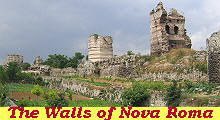  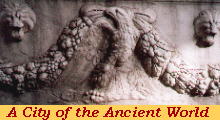 |
